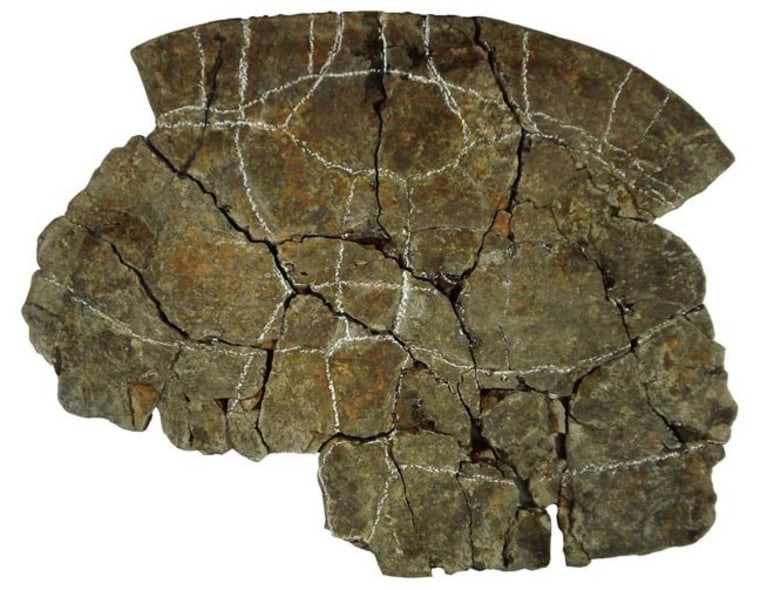A new fossil turtle species discovered in South America boasts quite a bulky shell — about as thick as your average high-school textbook.
The shell, about 3.3 feet (1 meter) across and 1.4 inches (3.5 centimeters) thick, might have protected the turtle against attacks from large crocodile-like animals as well as the giant Titanoboa, the (about 45-feet long), which would have shared this turtle's neighborhood around 60 million years ago, the researchers say.
The newly identified species, called Cerrejonemys wayuunaiki and discovered in the Cerrejón coal mine in Columbia, was the ancestor to one of the most diverse groups of South American freshwater turtles living today, said study author Edwin Cadena, a doctoral candidate at North Carolina State University.
Its shell is about twice as thick as the shells of these modern freshwater turtles, he said.
The fossil provides a glimpse into what these creatures looked like all those years ago, which, besides their size, is surprisingly analogous to , Cadena said. This similarity suggests these turtles were already pretty varied, even back then.
"The modern diversity that we see in the tropics of South America, it was already set up during the Paleocene," Cadena told LiveScience. The Paleocene is the period of time right after the extinction of the dinosaurs, from about 65 million to 56 million years ago.
The fossil is closely related to a group of turtles that have been found in Brazil, suggesting these turtles might have up the coast of South America, Cadena said.
And the findings back up previous ideas about where this group of turtles originated.
"We are still trying to understand why six of this turtle's modern relatives live in the Amazon, Orinoco and Magdalena river basins of South America and one lives in Madagascar," Cadena said. "It closes an important gap in the fossil record and supports the idea that the group originated near the tip of South America before the continent separated from India and Madagascar more than 90 million years ago."
Cadena and his colleagues are currently working to characterize at least three more fossil turtle species, which are closely related to C. wayuunaiki, all from the Cerrejón mine site. Some of these species are even larger than this thick-shelled turtle, reaching almost 6 feet (170 cm) in length, Cadena said.
These findings, along with other fossils that have been discovered at Cerrejón (like Titanoboa), paint a picture of what life was like in the .
"[These fossils] tell us that after the extinction of dinosaurs, the tropics were rich in diversity, [they had] a really high diversity of reptiles," Cadena said. "Not only diversity of reptiles, but also really big reptiles, like the big snake that has been described already, the huge crocodiles, and in this case, huge turtles too."
The results were published March 24 in the Journal of Vertebrate Paleontology.
